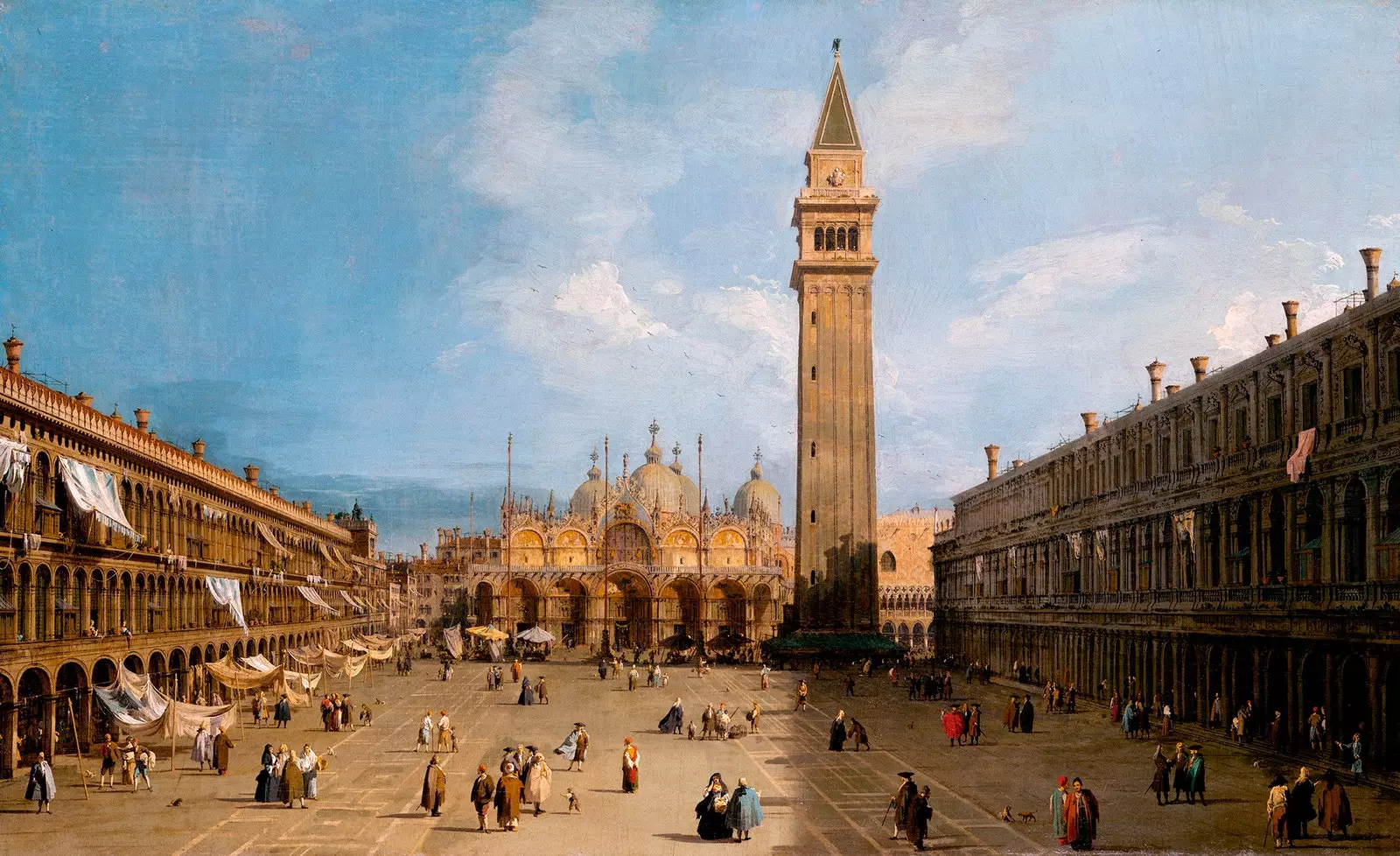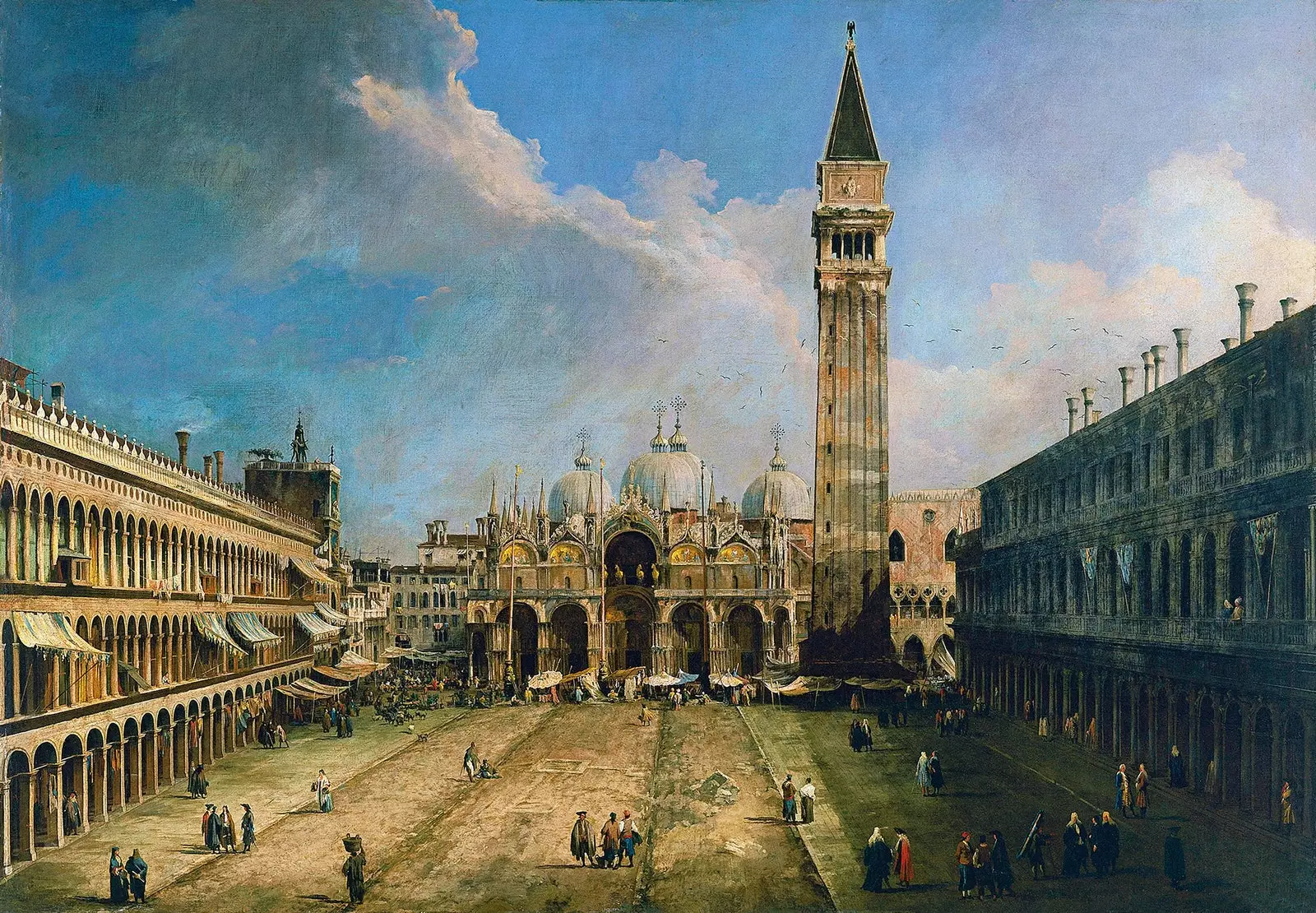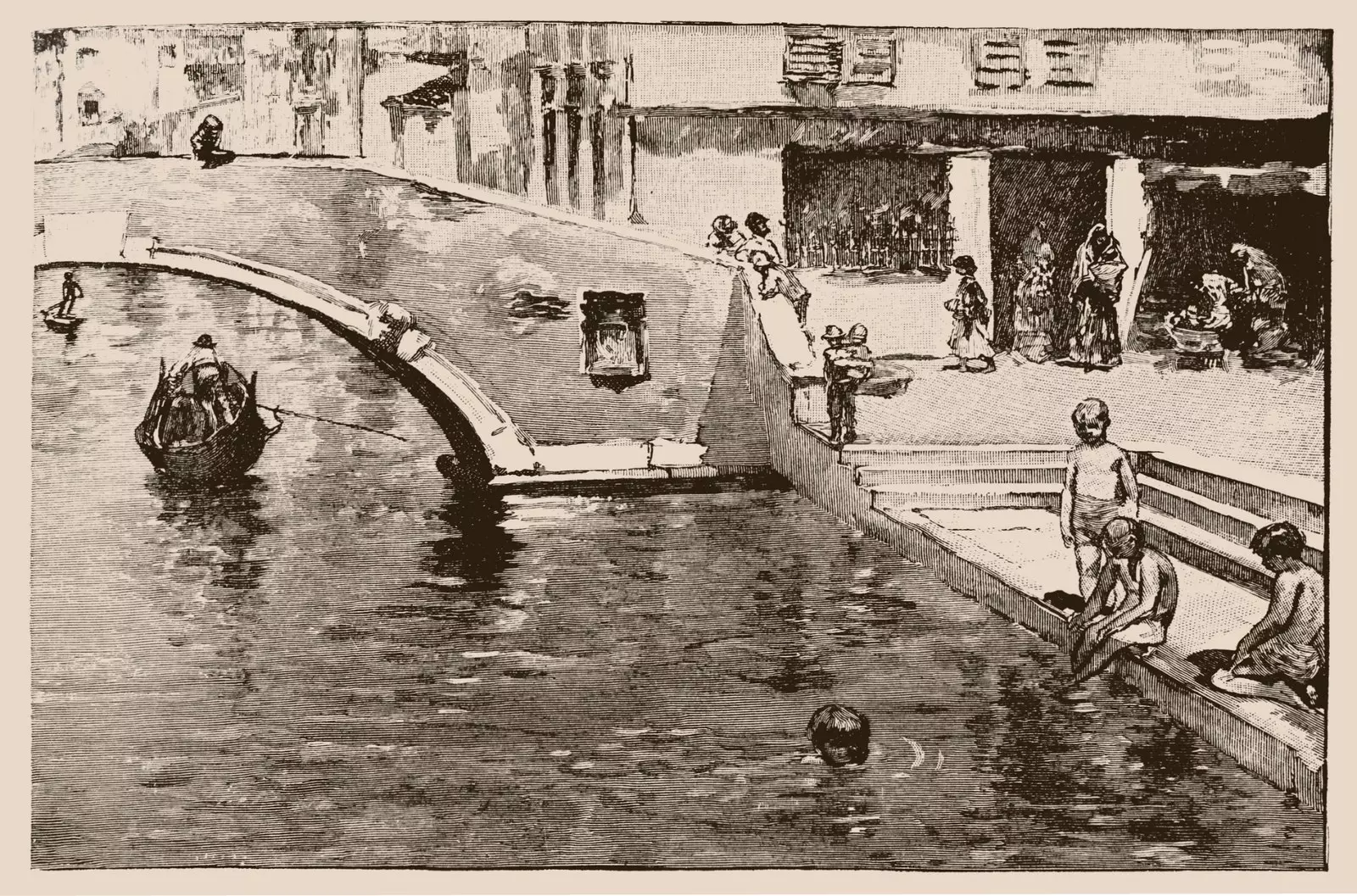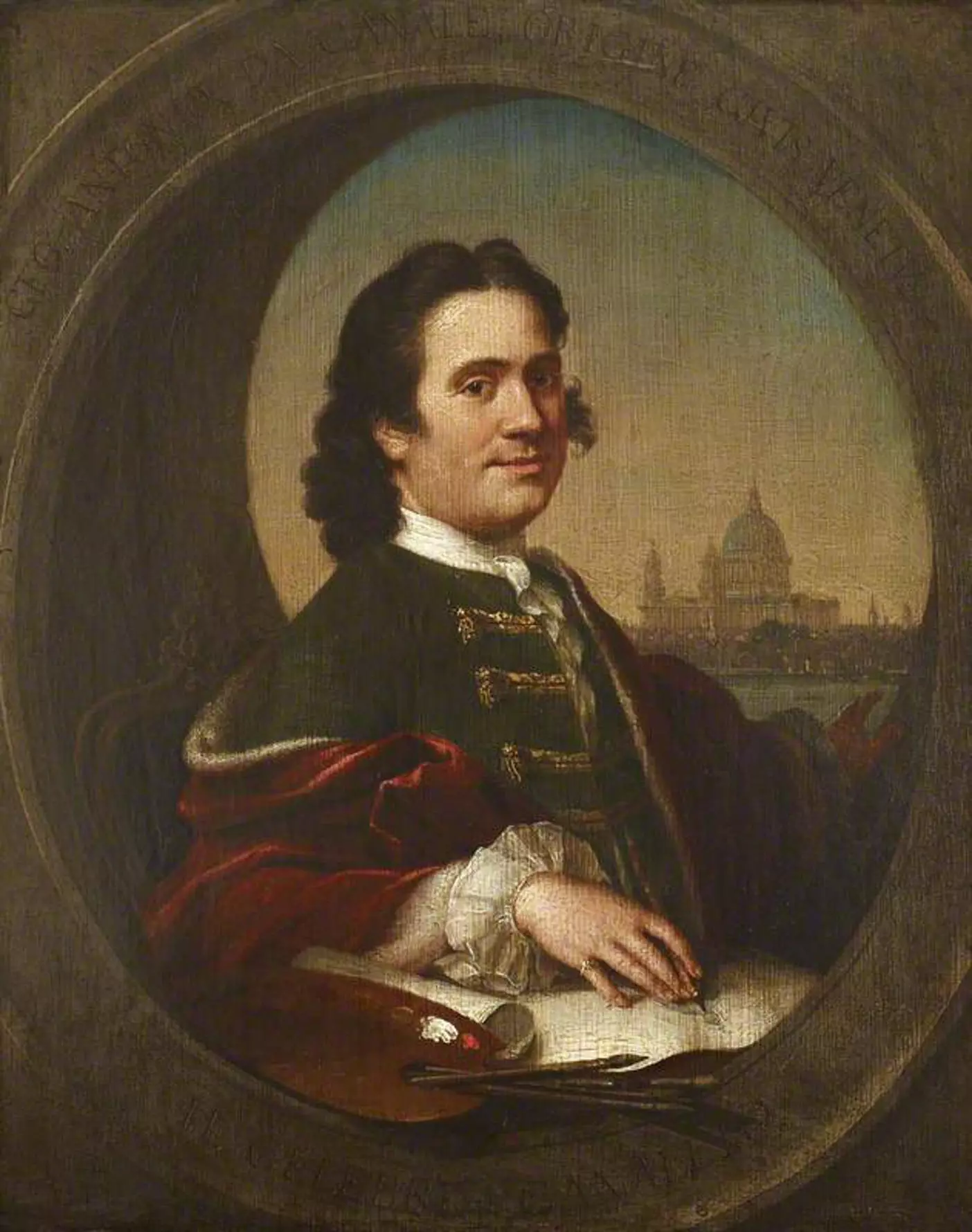
Canaletto's 'St. Mark's Square' (Harvard Foogg Museum version)
In the XVIII century, no self-respecting traveler returned from Venice without one of Canaletto's views . The veduta , or urban panorama, was the first properly tourist pictorial genre . He was born in the neuralgic points of the grand-tour , the tour of Italy that the aristocrats of northern Europe turned into a cultural rite.
Giovanni Antonio Canal He was the son of the painter Bernardo Canal, hence his nickname: Canaletto , the small Channel. He devoted his formative years to creating sets for the theater. These scenes required a believable illusion of depth. For this they were essential perspective insights . When Giovanni Antonio traveled to Rome in 1719, he met panini , which had shaped a new genre. The sights of him and whims , or recreations of imaginary ruins and architectures, delighted the foreign clientele.
Canaletto, then twenty-two years old, set out to apply his model to Venice, obligatory stop of the Tour . Unlike his Roman colleague, he had no traces of antiquity, but he had the canals, gondolas, and St. Mark's Square. The development of perspective techniques required by the topographic painting He took him to the Academy, where he would come to teach this discipline.
Along with fans like Francesco Guardi and Bernardo Belloto , Canaletto created an idealized image of the city. He used to make his canvases to order, so there are usually several versions of the same view.
Saint Mark's Square was a popular motif. The museum Thyssen-Bornemisza and the museum Fogg from Harvard in Boston , retain two related pieces. The square is represented from the west, the place now occupied by the so-called Napoleonic Wing . It was built after the demolition of the church of San Geminiano, the work of the architect Sansovino , from whose rose window Canaletto probably made the sketches of it.
The point of view is located between seven and ten meters above the ground . The bell tower has been shortened and the basilica has grown in height. The shadows show that the painter has fixed the scene between ten and eleven in the morning. The figures gather in small groups. They chat under capes and hats.

Journey to a painting: 'La plaza de San Marcos', by Canaletto (version of the Thyssen-Bornemisza Museum)
The observer's gaze follows the line marked by the lateral buildings, as well as the pavement pattern . If extended, they would converge at three aligned points in front of the basilica's portal. Giovanni Antonio's technique creates a scenic box , meticulous in the attention to the picturesque in the stalls, under the awnings.
Like someone who uploads an image to social networks today, 18th-century travelers sought to return home with a recognizable sample of the city . Saint Mark's Square and the Grand Canal was the thing to see. The tourist kept a diary . Memory was written and pictorial.
The itinerary was established in the mid-17th century, when the Treaty of Münster ended the Thirty Years' War . Peace opened the paths. The development of enlightened thought gave meaning to an idea: you could travel for pleasure. Before it was done for religious, commercial, diplomatic or military reasons. Innovation started from an idea. If knowledge comes from the senses, its development will depend on the stimuli to which they have been exposed.
The trip to Italy was imposed as a rite of passage for the young men of the upper class . Accompanied by a cicerone, the tutor who watched over their learning, they crossed the Alps with a legion of servants and stopped at Turin, Florence, Pisa, Padua, Bologna, Venice, Rome, Naples . Sometimes they ventured Sicily , Even Greece , then under Turkish rule.

There was a time in Venice when children bathed in the canal and artists exclusively enjoyed its architecture.
They bought sculptures, altars, fountains, works by the Renaissance and Baroque masters, samples of lava from Vesuvius; financed archaeological excavations in Pompeii ; they studied music, painting and languages; Pompeo Battoni He made portraits of them surrounded by their acquisitions, which they would exhibit in cabinets, bookstores, salons, gardens. They had an unlimited budget. The journey lasted months, years.
But it was necessary to keep the distance. Italy was considered a land of promiscuity, far removed from Protestant morality. The guide that in 1722 published Jonathan Richardson he warned young gentlemen of the dangers of dissipation. Not in vain, under one of the layers that populate San Marco Square in Canaletto's work, could hide Giacomo Casanova, the libertine.

Canaletto self-portrait
